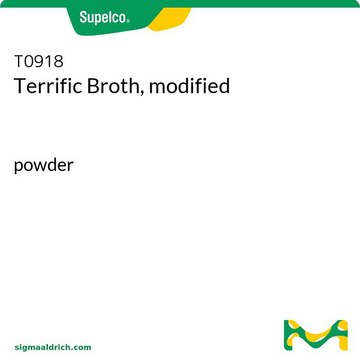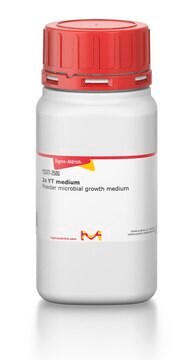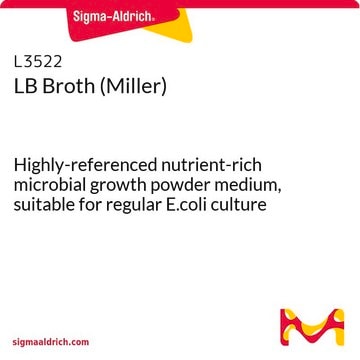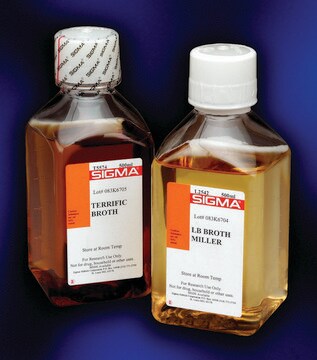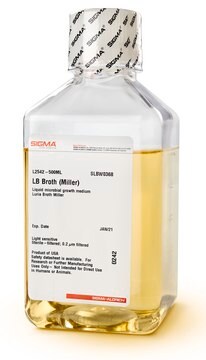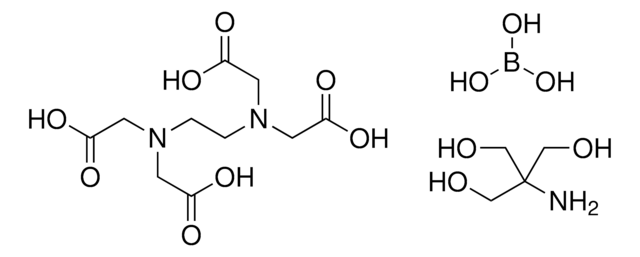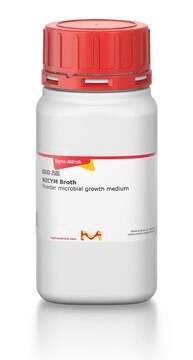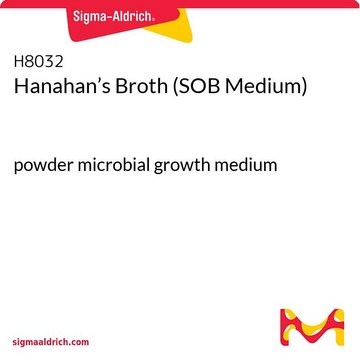Kluczowe dokumenty
T9179
Terrific Broth
EZMix powder microbial growth medium
Synonim(y):
Nośniki TB
About This Item
Polecane produkty
klasa czystości
Molecular Biology
for molecular biology
Poziom jakości
opis
TB; quick dissolve, dust-free formulation
sterylność
non-sterile
Formularz
powder
metody
microbiological culture: suitable
Zastosowanie
agriculture
food and beverages
microbiology
temp. przechowywania
room temp
przydatność
nonselective for Escherichia coli
nonselective for coliforms
Opis ogólny
Zastosowanie
Terrific broth has been used:
- as a medium for selective growth of E.coli BL21 (DE3) V2RpRARE expressing MLL SET (nuclear proto-oncogene) domain in pET28GST-LIC
- to grow BL21 (DE3) cells containing plasmid expressing IL-8 (interleukin-8)
- Terrific broth is also suitable for use in bacterial suspension (Bacillus subtilis strain 1085B)
Cechy i korzyści
- Granulated, dust-free format for safer handling and faster mixing
- A budget-friendly alternative to liquid
- Modified formulation (without glycerol)
- Easy scale-up using larger package sizes
Komponenty
23.6g/L Yeast Extract
11.8g/L Tryptone
9.4g/L K2HPO4
2.2g/L KH2PO4
Rekonstytucja
Informacje prawne
produkt powiązany
Kod klasy składowania
11 - Combustible Solids
Klasa zagrożenia wodnego (WGK)
WGK 3
Temperatura zapłonu (°F)
Not applicable
Temperatura zapłonu (°C)
Not applicable
Wybierz jedną z najnowszych wersji:
Masz już ten produkt?
Dokumenty związane z niedawno zakupionymi produktami zostały zamieszczone w Bibliotece dokumentów.
Klienci oglądali również te produkty
Protokoły
Hodowla bakterii E. coli w skali od małych kultur do fermentacji. Uwzględniono protokoły inicjowania kultury starterowej, komórek zawiesinowych, monokultury i posiewu bakteriofaga M13.
General protocols for growth of competent cells in microbial medium.
Nasz zespół naukowców ma doświadczenie we wszystkich obszarach badań, w tym w naukach przyrodniczych, materiałoznawstwie, syntezie chemicznej, chromatografii, analityce i wielu innych dziedzinach.
Skontaktuj się z zespołem ds. pomocy technicznej
